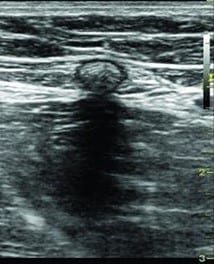Treatment of Varicose Veins, Beaver
At the Advanced Vein Center in Beaver, Butler and Allegheny County we use the most advanced imaging and certified technicians to assist your doctor in creating a Varicose Veins treatment plan unique for you.
First an RVT, Registered Vascular Technician, will take almost an hour doing a very comprehensive Doppler Ultrasound exam and Vein Mapping to thoroughly plan a treatment protocol unique for you. Veins are measured, the valves are tested for reflux, and the process is begun to give you back healthier legs.
Many conditions place increased pressure on the veins in the legs

Simple changes in lifestyle can play a role in warding off vein diseases. Exercising and maintaining a healthy diet are a good place to start. Even a small to moderate amount of exercise that targets the legs can reveal large health benefits. By moving your legs, you are flexing your muscles which helps the veins push the blood uphill to the heart. Take a few minutes every hour or two to get up and move.
Usually, if failed and leaking valves are identified the the larger veins like the Greater saphenous Vein or Small Saphenous Vein are closed to prevent leg swelling. The blood is routed to deep working veins instead of the blood pooling under the skin. This pooling and swelling of the leg veins is what causes varicose veins
The best treatment of varicose leg veins is Radio Frequency Vein Ablation. This is accomplished through a tiny poke hole through which a thin catheter is inserted and threaded up the abnormal veins. It is then heated using radio waves and the vein is closed. A band aid is all that is necessary to cover the site and compression stockings are worn for 48 hours.
How Are Varicose Veins Treated?
Here are some methods doctors treat varicose veins, among the many different therapies available.
Compression clothing
Bandaging and compression clothing are two types of therapy that promote blood flow. Compression socks are just one illustration. By compressing or squeezing the veins, these elastic stockings stop blood from flowing backward. Compression stockings may also aid in the healing of skin ulcers and the avoidance of developing new ones. If used consistently, compression stockings can effectively treat varicose veins and reduce the need for more invasive procedures.
Endovenous Ablation
To see the vein, the doctor employs ultrasound technology. Through a tiny incision, a fiber or electrode is transferred to the targeted spot within the vein. In order to collapse the vein surrounding the fiber or electrode and serve as insulation for the heat of the energy, local anesthetic is administered into the tissues close to the vein. The vessel closes as a result of the energy’s heating. After the surgery, the problematic vein will “scar down” and contract.
Endovenous Ablation
Internal thermal therapy (laser and radiofrequency ablation). The bigger, bulging surface veins on the legs are treated with this technique. The doctor places a little tube into the vein during the surgery. A little probe is inserted through the tube by the doctor. The vein’s inside is heated and sealed off by a device at the probe’s tip. The vein is permanently sealed by the gadget using radio waves or laser radiation. The regular blood flow is taken over by healthy veins that surround the occluded vein.
Sclerotherapy
The most popular method of treating minor varicose and spider veins is sclerotherapy. A chemical is injected into the vein by the doctor. The chemical makes the vein walls enlarge, adhere, and close off.
As a result, the vein scars and the blood flow is stopped. After sclerotherapy, your doctor or nurse could advise wearing gradient compression stockings to promote healing. The vein should disappear in a few weeks. It can take several sessions for it to take effect. Additionally, it’s possible for varicose or spider veins to reappear.
Phlebectomy via ambulation
With this procedure, varicose veins that are just below the skin’s surface are removed. To remove the vein from the leg, the doctor utilizes hooks and tiny skin incisions. Typically, the vein is removed by the doctor in a single procedure, leaving only very small scars.
The day after therapy, many patients can resume their regular activities. The regular flow of blood will subsequently be replaced by healthy veins.
Surgical stripping and ligation
Larger varicose veins are treated with this operation. Through tiny skin incisions, problematic veins are closed off and totally removed from the leg during this procedure. It may take up to a month for recovery. The regular blood flow is taken over by healthy veins.
How do I take care of my varicose veins?
Don’t stand still for too long. If you can’t avoid it, at least try to move around. Walking causes the muscles in your legs to contract, which increases the flow of blood to your heart.
Get moving; it will improve blood circulation. Losing weight can be beneficial if you are overweight.
You might be advised to use compression stockings by your doctor. These exert light pressure, which prevents blood from building up in your legs. They must be expertly fitted by a person having this type of training.
When should I visit a physician?
Consult a doctor if:
- You worry about having varicose veins
- You want to receive therapy
- Your symptoms disturb you.
- You have varicose eczema or changes in your skin’s color.
- You get side effects like ulcers or thrombophlebitis.
What causes varicose veins in hands?
Varicose veins in the hands, also known as dorsal hand veins, are typically not true varicose veins like those found in the legs. Instead, they are often the result of natural aging and loss of fat and collagen in the hands, which can make the veins more prominent and visible. Other factors that can contribute to the appearance of varicose veins in the hands include:
- Genetics: Some people may be genetically predisposed to having more visible veins in their hands.
- Weight Loss: Rapid weight loss or aging can lead to the loss of fat and collagen in the hands, making veins more noticeable.
- Sun Exposure: Chronic sun exposure can cause skin thinning and loss of elasticity, making veins more visible.
- Hormonal Changes: Hormonal changes, such as those that occur during pregnancy, menopause, or with the use of hormonal medications, can affect vein visibility.
How often should varicose veins in hands be monitored by a healthcare professional?
The frequency of monitoring varicose veins by a healthcare professional depends on several factors, including the severity of the condition, the presence of symptoms, and the individual’s overall health. In general, if varicose veins are asymptomatic (not causing any symptoms) and are not associated with any complications, they may not require regular monitoring. However, if varicose veins are causing symptoms such as pain, swelling, or skin changes, or if they are associated with complications such as ulcers or blood clots, more frequent monitoring may be necessary.
Can varicose veins in hands recur after treatment?
Varicose veins in the hands, also known as dorsal hand veins, can recur after treatment, especially if the underlying causes, such as aging or hormonal changes, are not addressed. Lifestyle factors, such as sun exposure and weight fluctuations, can also contribute to recurrence. Regular monitoring and maintenance treatments may be needed to manage recurrence.
Ready to Schedule a Complimentary Consultation?
REQUEST A CONSULTATION
To Request a Consultation, Call or Text 724-987-3220 for Immediate Response OR Complete the form above to speak with one of our skilled doctors or schedule a FREE Vein Screening.

